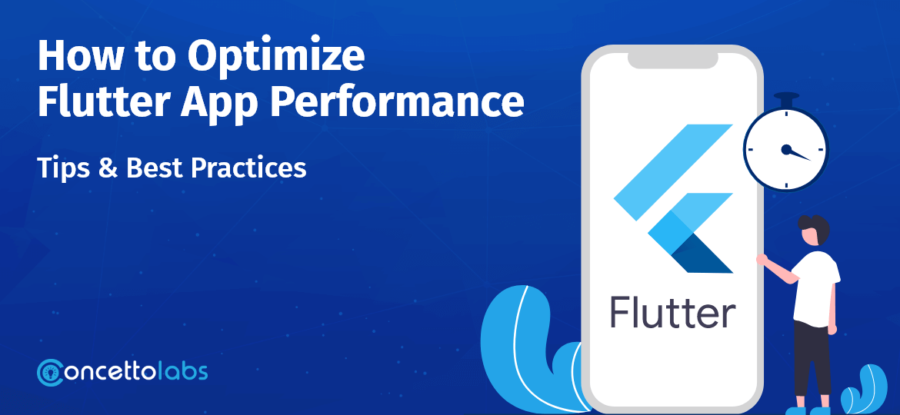In the contemporary digital ecosystem, user hopes for app performance have never been greater.
Flutter, with its open UI components and cross-platform abilities, is a prevalent choice for a flutter mobile app development company.
Nevertheless, maximizing the complete potential of Flutter needs a profound dive into performance optimization.
This article discovers progressive methods and best practices to lift your Flutter app’s performance, guaranteeing impeccable user experiences and competitive gain.
Classifying Performance Holdups
Widespread Problems in Flutter Apps: Just like any other software, Flutter Apps can face holdups and blockages.
Sluggish executing, high CPU usage, and memory outflows are common issues.
Categorizing these bottlenecks in the initial phases can save valuable development time.
Profiling with Flutter DevTools: Flutter DevTools offers a collection of tools to profile your app.
The performance label assists in classifying sluggish frames and resource-hungry widgets, controlling your optimization energies efficiently.
Flutter Widgets and State Management
Resourceful Widget Utilization: Widgets are the elementary units of a Flutter app.
improve their utilization by retaining const constructors anywhere thinkable.
Diminish the widget tree complexity and intricacy, confirming an effortless execution procedure.
Smart State Management: Pick the correct state management system for your app. It could be Provider, Riverpod, or even Bloc.
Effective state management not only improves performance but also streamlines debugging and preservation.
Network and Data Optimization
Network Requests Optimization: Decrease inexpression by improving network requests.
Implement methods like connection pooling and condensing payloads.
Utilize caching mechanisms to aid regularly entreated data from local storage, decreasing dependance on the network.
Prefetching Methods: Apply data prefetching to load important data before.
This pre-emptive method guarantees impeccable user experiences, particularly in data-intensive apps.
UI/UX Optimization
Effortless Animations and Evolutions: Animations are essential to contemporary app experiences.
Enhance animations for smoothness, warranting they don’t drain the device’s resources.
Deliberate delicate animations that improve user interaction without crushing the system.
Resourceful UI Designs: Intricate UI designs can influence app performance.
Utilize effectual design widgets like ListView.builder for vast lists and improve multifaceted designs to diminish needless widget redevelopments, conserving resources.
Refining Animation and Graphics Interpreting
Improving Intricate Animations: While animations improve user engagement, off-color improved ones can waste resources.
Use Flutter’s AnimatedBuilder and AnimatedWidget for resourceful animations.
Moreover, study utilizing Flare, a vector animation tool, to develop lightweight and visually tempting animations that won’t bring the performance down.
GPU Acceleration for Graphics: Utilize Flutter’s GPU-accelerated rendering engine.
Unburdening graphic-intensive functions to the GPU decreases CPU usage, ensuing in effortless animations and receptive exchanges.
Comprehend how to use hardware deposits successfully, guaranteeing a faultless visual experience over devices.
Memory Management
Flutter offers tools like the memory profiler to classify and correct memory outflows to all. Game app development company also take advantage from it .
Contemplate the development of widgets and cash out of resources appropriately. Handle vast datasets competently, evading needless data saving in memory.
Testing and Debugging
Automated Performance Testing: Add performance tests into your CI/CD channel.
Automated tests identify performance reversions prematurely, warranting your optimizations endure updates and novel aspects.
Debugging Tools and Methods: Utilize debugging tools like print reports and conventional debug painters to identify performance holdups.
Real-time debugging helps in the fast addressing of problems and drawbacks.
Cutting-edge State Management Approaches
Immutable Data and Provider: Immutable data structures improves expectedness and streamline state handling.
Discover Provider’s absolute models, which improve widget redevelopments.
Immutable data, when shared with Provider, decreases pointless UI updates, protecting resources for crucial functions.
State Restoration and Determination: Apply state restoration mechanisms to reserve app state across restarts.
Utilize Flutter’s rebuilding framework to reconstruct the app’s UI grading, preserving the user’s background.
Moreover, contemplate resourceful data perseverance methods, such as using SQLite databases and NoSQL solutions like Firebase, to certify rapid data recovery without decreasing performance.
Third-Party Packages and Plugins
Selecting Resourceful Packages: Estimate third-party packages accurately. Select packages that goes hand-in-hand with your app’s design and performance objectives.
Frequently update packages to profit from performance enhancements presented by the community.
Plugin Influence Evaluation: Plugins can suggestively influence performance. Order well-preserved plugins and examine their performance influence.
Gauge replacements if a plugin poorly distresses your app’s receptiveness.
Concluding Thoughts
In the swiftly changing realm of mobile app development, optimization appears as a constant obligation, not a simple one-time function.
The intuitions shared here deliver a strong base for creating receptive and pleasant Flutter apps.
Each millisecond saved in loading periods, every simulation that works flawlessly, and each resource preserved donates to an unmatched user experience.
These shades make your app not just practical but excellent, becoming the decisive factor in the app world where competition is fierce.
As you steer the ever-developing ecosystem of technology, stay performance-oriented and hands-on.
Unceasingly repeat, refining and adjusting your app’s performance grounded on practical usage data and user response.
Accept and apply developing technologies and trends, utilizing them to improve your app’s effectiveness further.
Moreover, always keep the end-user at the core of your optimizations. Their gratification and affluence of collaboration are the eventual measures of your app’s effectiveness.
By preserving this user-oriented method and adding the lessons, you’re not just developing apps; you’re creating experiences that all users treasure.
So, allow these best practices lead your journey, guaranteeing that your Flutter apps not only meet but surpass user expectations, creating a permanent imprint in the digital dominion.

